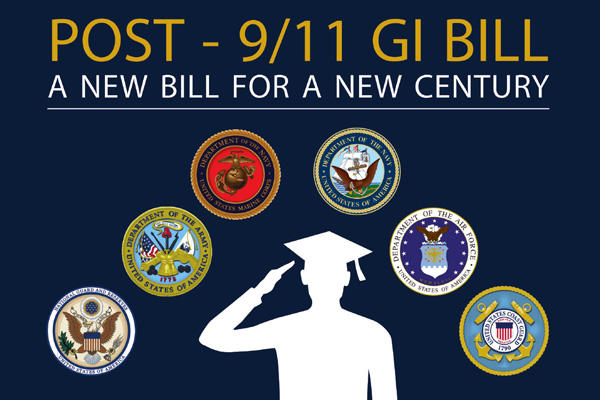A report by the Government Accounting Office (GAO) has determined that the VA overpaid veterans using the Post-9/11 GI Bill more than $416 million in fiscal year 2014.
The $416 million is about 4% of the nearly $11 billion paid by the VA in Post-9/11 GI Bill benefits during fiscal year 2014. The report also noted that overpayments increased by nearly 20% from the previous fiscal year, while total program payments increased by just 6%. In addition in November 2014 the VA had nearly $262 million in uncollected GI Bill debt from previous years.
GAO cited a number of factors contributing to the increase including:
- Guidance for veterans,
- Enrollment verification process, and
- Training for school officials.
Guidance for Veterans
The report said that 1 in 4 veterans had some type of GI Bill debt in fiscal year 2014, mostly from dropping a class. GAO said many veterans may not realize they can be overpaid due to enrollment changes until after they have already received their first overpayment. Because the VA is not effectively communicating its program policies to veterans, some veterans may be incurring debts that they could have otherwise avoided. See our page, What Happens If You Drop A Class Using the GI Bill for details on how dropping a class causes a debt.
Also, the debt collection process for Post-9/11 GI Bill recipients is confusing and inefficient. Six years after the Post-9/11 GI Bill was implemented VA is still updating its computer systems to more accurately and expeditiously process debt transactions. VA is scheduled to roll out a software fix scheduled for November 15 to address many issues.
Enrollment verification process
Unlike previous GI Bill programs, students using the Post-9/11 GI Bill do not have to verify their attendance to the VA in order to receive payments. With all other GI Bill programs students are required to verify to the VA that they are actually enrolled in classes before a payment is issued. The verification is normally done online or over the phone. VA has estimated that building a verification program would cost them $10 million, while GAO estimates that the existence of a verification system would save the government over $100 million every year.
Training for school officials
The report went on to state that poorly trained school officials account for about a small amount (about 8%) of overpayments. Since school certifying officials are not VA employees the VA has no authority to require that school certifying officials complete any of its training about how to correctly process enrollment information. While the VA does offer online training, workshops, conferences, and personal assistance to schools that request it numerous prior GAO and VA Inspector General reports have recommended that VA do more training to school officials.
Report Recommendations
The report recommended that Congress should consider granting VA explicit authority to require training for school officials. In addition, GAO made a number of recommendations to improve VA's guidance and processes, including providing additional, easier to understand guidance to veterans, requiring veterans to verify their enrollment prior to receiving payment, and developing improved and additional debt notification methods.






